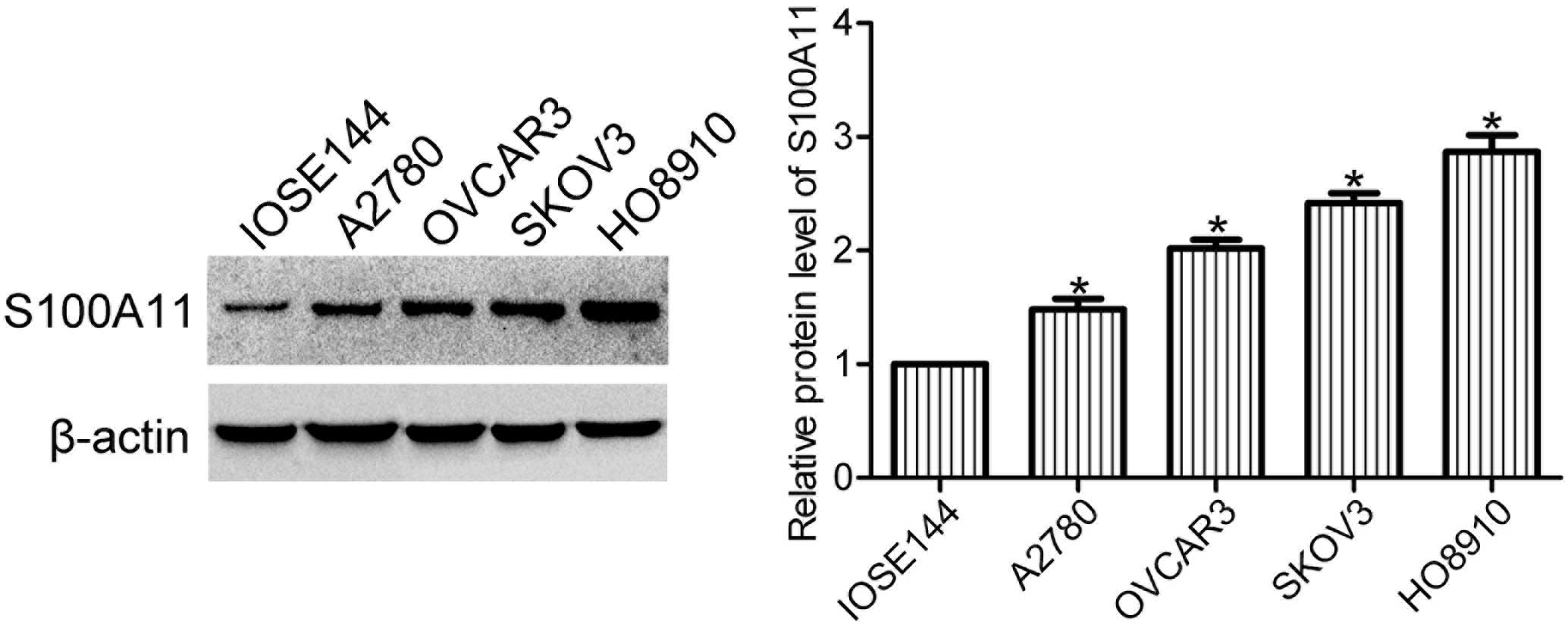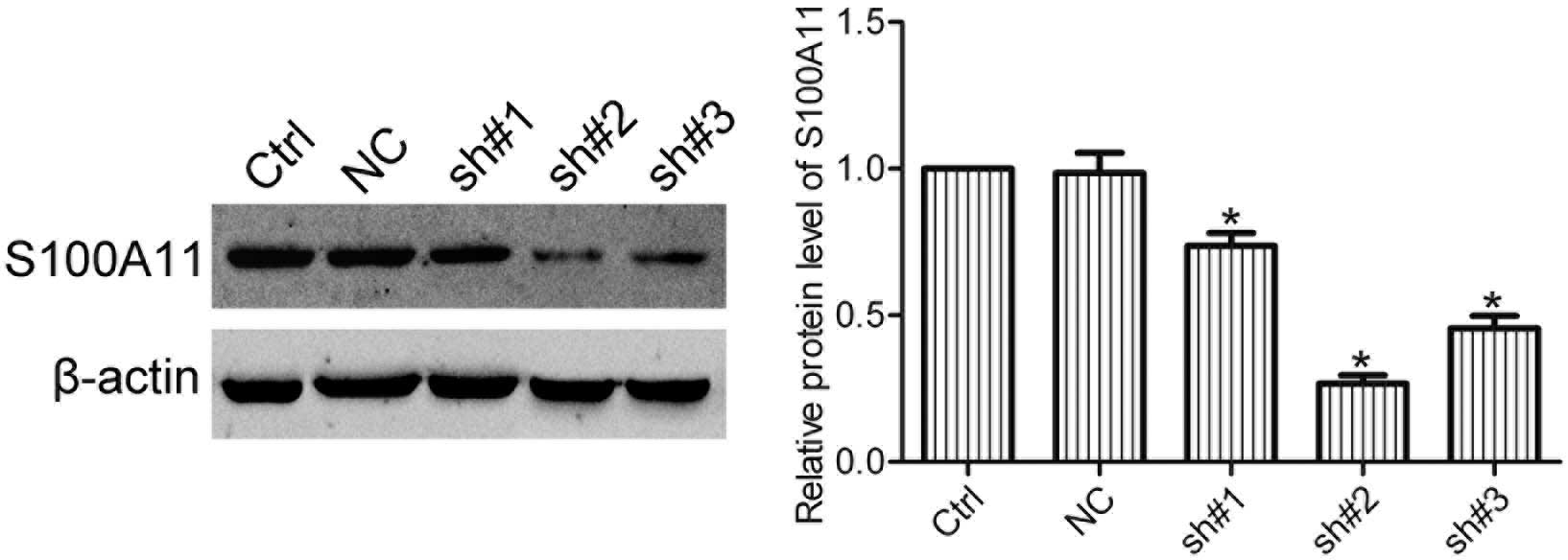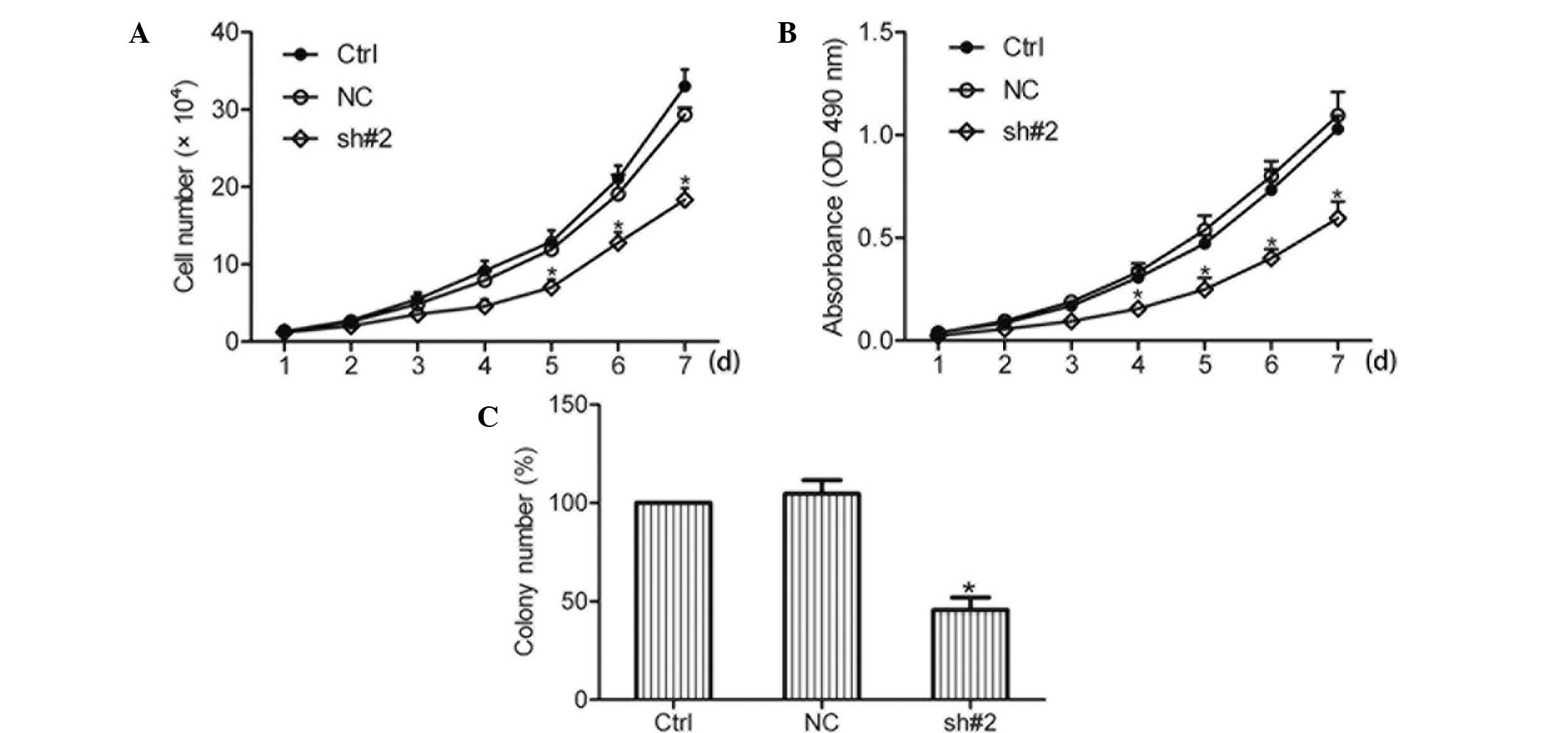|
1
|
Siegel R, Ma J, Zou Z and Jemal A: Cancer
statistics, 2014. CA Cancer J Clin. 64:9–29. 2014. View Article : Google Scholar : PubMed/NCBI
|
|
2
|
Longuespée R, Boyon C, Desmons A, et al:
Ovarian cancer molecular pathology. Cancer Metastasis Rev.
31:713–732. 2012. View Article : Google Scholar : PubMed/NCBI
|
|
3
|
Schäfer BW and Heizmann CW: The S100
family of EF-hand calcium-binding proteins: functions and
pathology. Trends Biochem Sci. 21:134–140. 1996. View Article : Google Scholar : PubMed/NCBI
|
|
4
|
Heizmann CW, Fritz G and Schäfer BW: S100
proteins: structure, functions and pathology. Front Biosci.
7:d1356–d1368. 2002. View
Article : Google Scholar : PubMed/NCBI
|
|
5
|
Anania MC, Miranda C, Vizioli MG, et al:
S100A11 overexpression contributes to the malignant phenotype of
papillary thyroid carcinoma. J Clin Endocrinol Metab.
98:E1591–E1600. 2013. View Article : Google Scholar : PubMed/NCBI
|
|
6
|
Meding S, Balluff B, Elsner M, et al:
Tissue-based proteomics reveals FXYD3, S100A11 and GSTM3 as novel
markers for regional lymph node metastasis in colon cancer. J
Pathol. 228:459–470. 2012.PubMed/NCBI
|
|
7
|
Xiao MB, Jiang F, Ni WK, et al: High
expression of S100A11 in pancreatic adenocarcinoma is an
unfavorable prognostic marker. Med Oncol. 29:1886–1891. 2012.
View Article : Google Scholar
|
|
8
|
Liu XG, Wang XP, Li WF, et al:
Ca2+-binding protein S100A11: a novel diagnostic marker
for breast carcinoma. Oncol Rep. 23:1301–1308. 2010. View Article : Google Scholar : PubMed/NCBI
|
|
9
|
Mori M, Shimada H, Gunji Y, et al: S100A11
gene identified by in-house cDNA microarray as an accurate
predictor of lymph node metastases of gastric cancer. Oncol Rep.
11:1287–1293. 2004.PubMed/NCBI
|
|
10
|
Memon AA, Sorensen BS, Meldgaard P, Fokdal
L, Thykjaer T and Nexo E: Down-regulation of S100C is associated
with bladder cancer progression and poor survival. Clin Cancer Res.
11:606–611. 2005.PubMed/NCBI
|
|
11
|
Guarino M, Rubino B and Ballabio G: The
role of epithelial-mesenchymal transition in cancer pathology.
Pathology. 39:305–318. 2007. View Article : Google Scholar : PubMed/NCBI
|
|
12
|
McKiernan E, McDermott EW, Evoy D, Crown J
and Duffy MJ: The role of S100 genes in breast cancer progression.
Tumour Biol. 32:441–450. 2011. View Article : Google Scholar
|
|
13
|
Wang LN, Tong SW, Hu HD, et al:
Quantitative proteome analysis of ovarian cancer tissues using a
iTRAQ approach. J Cell Biochem. 113:3762–3772. 2012. View Article : Google Scholar : PubMed/NCBI
|
|
14
|
Hao J, Wang K, Yue Y, et al: Selective
expression of S100A11 in lung cancer and its role in regulating
proliferation of adenocarcinomas cells. Mol Cell Biochem.
359:323–332. 2012. View Article : Google Scholar
|
|
15
|
Miyazaki M, Sakaguchi M, Akiyama I,
Sakaguchi Y, Nagamori S and Huh NH: Involvement of interferon
regulatory factor 1 and S100C/A11 in growth inhibition by
transforming growth factor beta 1 in human hepatocellular carcinoma
cells. Cancer Res. 64:4155–4161. 2004. View Article : Google Scholar : PubMed/NCBI
|
|
16
|
Sakaguchi M and Huh NH: S100A11, a dual
growth regulator of epidermal keratinocytes. Amino Acids.
41:797–807. 2011. View Article : Google Scholar
|
|
17
|
Ji YF, Huang H, Jiang F, Ni RZ and Xiao
MB: S100 family signaling network and related proteins in
pancreatic cancer (Review). Int J Mol Med. 33:769–776.
2014.PubMed/NCBI
|
|
18
|
Wang C, Zhang Z, Li L, et al: S100A11 is a
migration-related protein in laryngeal squamous cell carcinoma. Int
J Med Sci. 10:1552–1559. 2013. View Article : Google Scholar : PubMed/NCBI
|
|
19
|
Luo X, Xie H, Long X, et al: EGFRvIII
mediates hepatocellular carcinoma cell invasion by promoting S100
calcium binding protein A11 expression. PLoS One. 8:e833322013.
View Article : Google Scholar :
|
|
20
|
Jaiswal JK, Lauritzen SP, Scheffer L, et
al: S100A11 is required for efficient plasma membrane repair and
survival of invasive cancer cells. Nat Commun. 5:37952014.
View Article : Google Scholar : PubMed/NCBI
|
|
21
|
Gallo D, Ferlini C and Scambia G: The
epithelial-mesenchymal transition and the estrogen-signaling in
ovarian cancer. Curr Drug Targets. 11:474–481. 2010. View Article : Google Scholar
|
|
22
|
Gheldof A and Berx G: Cadherins and
epithelial-to-mesenchymal transition. Prog Mol Biol Transl Sci.
116:317–336. 2013. View Article : Google Scholar : PubMed/NCBI
|
|
23
|
van Roy F and Berx G: The cell-cell
adhesion molecule E-cadherin. Cell Mol Life Sci. 65:3756–3788.
2008. View Article : Google Scholar : PubMed/NCBI
|
|
24
|
Li N, Song MM, Chen XH, Liu LH and Li FS:
S100A4 siRNA inhibits human pancreatic cancer cell invasion in
vitro. Biomed Environ Sci. 25:465–470. 2012.PubMed/NCBI
|
|
25
|
Li Z, Tang M, Ling B, et al: Increased
expression of S100A6 promotes cell proliferation and migration in
human hepatocellular carcinoma. J Mol Med (Berl). 92:291–303. 2014.
View Article : Google Scholar
|














